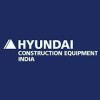Filter interviews by
Aichelin Unitherm Heat Treatment Systems India Interview Questions and Answers
8 Interview questions
A zero watt bulb is a bulb that consumes zero watts of power when turned on.
A zero watt bulb typically refers to an LED bulb that consumes very low power, close to zero watts, when turned on.
These bulbs are energy efficient and have a very low power consumption compared to traditional incandescent bulbs.
Zero watt bulbs are often used in applications where minimal power consumption is desired, such as night lights ...
Should costing is a process of estimating the manufacturing cost of a product based on its design, materials, and manufacturing processes.
Should costing involves analyzing the design, materials, and manufacturing processes to determine the cost of producing a product.
It helps in identifying cost-saving opportunities by comparing the estimated cost with the actual cost.
Should costing can be used to negotiate better...
The formula for resistance is R = V/I, where R is resistance, V is voltage, and I is current.
Resistance is the measure of opposition to the flow of electric current.
The unit of resistance is ohm (Ω).
Resistance can be calculated using Ohm's Law: R = V/I, where R is resistance, V is voltage, and I is current.
For example, if the voltage across a resistor is 10 volts and the current passing through it is 2 amps, the r...
A temperature controller is a device used to regulate and maintain a desired temperature in a system or process.
It measures the temperature using a sensor.
It compares the measured temperature to a setpoint or desired temperature.
Based on the comparison, it activates or deactivates a heating or cooling element to adjust the temperature.
It ensures that the temperature remains within a specified range.
Temperature con...
A PID controller is a feedback control loop mechanism widely used in engineering to control systems and processes.
PID stands for Proportional-Integral-Derivative.
It continuously calculates an error value as the difference between a desired setpoint and a measured process variable.
The controller then adjusts the control signal to minimize the error and bring the process variable closer to the setpoint.
The proportio...
The faulty finding procedure for motor failure involves a systematic approach to identify and diagnose the cause of the failure.
Start by gathering information about the motor failure, such as symptoms, error codes, and any recent changes or incidents.
Perform visual inspections to check for any obvious signs of damage or malfunction, such as burnt components or loose connections.
Conduct electrical tests to measure ...
Yes, I have a basic understanding of PLC (Programmable Logic Controller).
PLC is a digital computer used for automation of electromechanical processes.
It uses a programmable memory to store instructions and execute them in real-time.
PLCs are commonly used in industrial settings to control machinery and processes.
They can be programmed using ladder logic, function block diagrams, or structured text.
PLCs can interfac...
Resistance is the opposition to the flow of electric current through a conductor.
Resistance is measured in ohms (Ω).
It is caused by the collisions of electrons with atoms in the conductor.
Resistance converts electrical energy into heat.
Higher resistance leads to lower current flow.
Resistance can be calculated using Ohm's Law: R = V/I, where R is resistance, V is voltage, and I is current.
Aichelin Unitherm Heat Treatment Systems India Interview Experiences
6 interviews found
I applied via Referral and was interviewed before Jan 2023. There was 1 interview round.
(6 Questions)
- Q1. What is resistance?
- Ans.
Resistance is the opposition to the flow of electric current through a conductor.
Resistance is measured in ohms (Ω).
It is caused by the collisions of electrons with atoms in the conductor.
Resistance converts electrical energy into heat.
Higher resistance leads to lower current flow.
Resistance can be calculated using Ohm's Law: R = V/I, where R is resistance, V is voltage, and I is current.
- Q2. What is the faulty finding procedure for motor failure?
- Ans.
The faulty finding procedure for motor failure involves a systematic approach to identify and diagnose the cause of the failure.
Start by gathering information about the motor failure, such as symptoms, error codes, and any recent changes or incidents.
Perform visual inspections to check for any obvious signs of damage or malfunction, such as burnt components or loose connections.
Conduct electrical tests to measure volta...
- Q3. What is temperature controller?
- Ans.
A temperature controller is a device used to regulate and maintain a desired temperature in a system or process.
It measures the temperature using a sensor.
It compares the measured temperature to a setpoint or desired temperature.
Based on the comparison, it activates or deactivates a heating or cooling element to adjust the temperature.
It ensures that the temperature remains within a specified range.
Temperature controll...
- Q4. What is PID controller?
- Ans.
A PID controller is a feedback control loop mechanism widely used in engineering to control systems and processes.
PID stands for Proportional-Integral-Derivative.
It continuously calculates an error value as the difference between a desired setpoint and a measured process variable.
The controller then adjusts the control signal to minimize the error and bring the process variable closer to the setpoint.
The proportional t...
- Q5. Do you know basic of PLC?
- Ans.
Yes, I have a basic understanding of PLC (Programmable Logic Controller).
PLC is a digital computer used for automation of electromechanical processes.
It uses a programmable memory to store instructions and execute them in real-time.
PLCs are commonly used in industrial settings to control machinery and processes.
They can be programmed using ladder logic, function block diagrams, or structured text.
PLCs can interface wit...
- Q6. What is formula of resistance?
- Ans.
The formula for resistance is R = V/I, where R is resistance, V is voltage, and I is current.
Resistance is the measure of opposition to the flow of electric current.
The unit of resistance is ohm (Ω).
Resistance can be calculated using Ohm's Law: R = V/I, where R is resistance, V is voltage, and I is current.
For example, if the voltage across a resistor is 10 volts and the current passing through it is 2 amps, the resist...
Skills evaluated in this interview
(1 Question)
- Q1. What is your understanding of should costing?
- Ans.
Should costing is a process of estimating the manufacturing cost of a product based on its design, materials, and manufacturing processes.
Should costing involves analyzing the design, materials, and manufacturing processes to determine the cost of producing a product.
It helps in identifying cost-saving opportunities by comparing the estimated cost with the actual cost.
Should costing can be used to negotiate better pric...
Senior Electrical Design Engineer Interview Questions & Answers
posted on 11 Feb 2025
I appeared for an interview before Feb 2024.
(2 Questions)
- Q1. What is meant by a zero watt bulb?
- Ans.
A zero watt bulb is a bulb that consumes zero watts of power when turned on.
A zero watt bulb typically refers to an LED bulb that consumes very low power, close to zero watts, when turned on.
These bulbs are energy efficient and have a very low power consumption compared to traditional incandescent bulbs.
Zero watt bulbs are often used in applications where minimal power consumption is desired, such as night lights or in...
- Q2. Series and Parallel
(1 Question)
- Q1. Tell me Something about yourself
Interview Preparation Tips
I appeared for an interview before Jun 2024, where I was asked the following questions.
- Q1. Tell me the types of welding directs?
- Ans.
Welding directs include various methods used to join materials, each with unique characteristics and applications.
Arc Welding: Uses an electric arc to melt and join metals. Example: Shielded Metal Arc Welding (SMAW).
MIG Welding: Metal Inert Gas welding, ideal for thin materials. Example: Gas Metal Arc Welding (GMAW).
TIG Welding: Tungsten Inert Gas welding, known for precision. Example: Gas Tungsten Arc Welding (GTAW).
R...
- Q2. Do you have experience in furnace?
- Ans.
Yes, I have experience working with furnaces in quality control, focusing on temperature regulation and material integrity.
Conducted regular inspections of furnace operations to ensure compliance with safety standards.
Monitored temperature variations and made adjustments to maintain optimal conditions.
Performed material testing post-furnace processing to assess structural integrity.
Collaborated with engineering teams t...
Interview Preparation Tips
I applied via Campus Placement and was interviewed in Mar 2021. There was 1 interview round.
Interview Questionnaire
1 Question
- Q1. Sales, material management, costing
Interview Preparation Tips
Interview Questionnaire
3 Questions
- Q1. Questions asked regarding done projects
- Q2. FC FB difference , test logic, S7 communication, Scada animations
- Q3. Salary Discussion
Interview Preparation Tips
Experience: Experience shall match with required key skills
Top trending discussions






Interview questions from similar companies

I applied via Recruitment Consultant and was interviewed before Oct 2019. There were 5 interview rounds.
Interview Questionnaire
4 Questions
- Q1. What is meaning of civil engineering.?
- Ans.
Civil engineering is a branch of engineering that deals with the design, construction, and maintenance of infrastructure.
Civil engineering involves the planning, design, and construction of structures such as buildings, bridges, roads, and dams.
It focuses on ensuring the safety, functionality, and sustainability of infrastructure projects.
Civil engineers use principles of physics, mathematics, and materials science to ...
- Q2. How you given organization profits in your allocated job role.?
- Ans.
I have driven profits through process improvements, cost reductions, and innovative solutions in my engineering roles.
Implemented a new automated testing framework that reduced testing time by 30%, allowing faster product releases and increased revenue.
Led a cross-functional team to redesign a key product feature, resulting in a 15% increase in customer satisfaction and a 10% boost in sales.
Optimized supply chain proce...
- Q3. What are the main quality focus on civil engineering field?
- Ans.
The main quality focus in civil engineering is safety, durability, and sustainability.
Ensuring the safety of structures and infrastructure
Designing for durability and longevity
Incorporating sustainable practices and materials
Adhering to building codes and regulations
Conducting thorough inspections and testing
Using advanced technology and software for design and analysis
Collaborating with other professionals to ensure q...
- Q4. How you doing project efficient?
Interview Preparation Tips

Software Engineer Interview Questions & Answers
Gilbarco Veeder Rootposted on 18 Feb 2023
I applied via Campus Placement and was interviewed before Feb 2022. There were 3 interview rounds.

Mathematics, logical reasoning
C/C++, device driver, Networking, objectives
Interview Preparation Tips

I applied via Recruitment Consulltant and was interviewed before Apr 2022. There were 4 interview rounds.

C, DS understanding and
C and C++ and domain knowledge
General aptitude test

Senior Engineer Interview Questions & Answers
V.S.T Tillers Tractorsposted on 11 May 2022
I applied via Naukri.com and was interviewed before May 2021. There were 4 interview rounds.

Share the details from work related questions
(1 Question)
- Q1. What ever the new ideas
- Ans. Working time any new development
(4 Questions)
- Q1. Which type of field in previous working area
- Q2. How many years working experience and working time any improvement
- Q3. Work related question
- Q4. Why choose this type job
- Ans.
I chose this job to leverage my passion for technology and problem-solving in creating impactful solutions.
I have always been fascinated by technology and its potential to solve real-world problems.
In my previous role, I developed a software solution that improved efficiency by 30%, showcasing my ability to make a tangible impact.
I enjoy collaborating with cross-functional teams, as it allows me to learn from others an...
Interview Preparation Tips
Aichelin Unitherm Heat Treatment Systems India Interview FAQs
Tell us how to improve this page.
Aichelin Unitherm Heat Treatment Systems India Interviews By Designations
- Aichelin Unitherm Heat Treatment Systems India Software Engineer Interview Questions
- Aichelin Unitherm Heat Treatment Systems India Quality Engineer Interview Questions
- Aichelin Unitherm Heat Treatment Systems India QC Inspector Interview Questions
- Aichelin Unitherm Heat Treatment Systems India Graduate Engineer Trainee (Get) Interview Questions
- Aichelin Unitherm Heat Treatment Systems India Senior Electrical Design Engineer Interview Questions
- Aichelin Unitherm Heat Treatment Systems India Purchase Engineer Interview Questions
Interview Questions for Popular Designations
- Software Developer Interview Questions
- Senior Associate Interview Questions
- Sales Executive Interview Questions
- Senior Engineer Interview Questions
- Consultant Interview Questions
- Associate Software Engineer Interview Questions
- Graduate Engineer Trainee (Get) Interview Questions
- Data Analyst Interview Questions
- Show more
Overall Interview Experience Rating
based on 8 interview experiences
Difficulty level
Duration
Interview Questions from Similar Companies
Aichelin Unitherm Heat Treatment Systems India Reviews and Ratings
based on 47 reviews
Rating in categories
|
Service Engineer
14
salaries
| ₹3 L/yr - ₹6.5 L/yr |
|
Senior Production Engineer
6
salaries
| ₹4 L/yr - ₹6.3 L/yr |
|
Electrical Design Engineer
6
salaries
| ₹4.1 L/yr - ₹6.3 L/yr |
|
Design Engineer
5
salaries
| ₹3.5 L/yr - ₹6 L/yr |
|
Electrical Engineer
5
salaries
| ₹1.5 L/yr - ₹4 L/yr |

Ge India Industrial

V.S.T Tillers Tractors

Gilbarco Veeder Root

HYT Engineering
- Home >
- Interviews >
- Aichelin Unitherm Heat Treatment Systems India Interview Questions











